MAP’S PRESENTATION SERVICE OF THE CULTURAL EVENTS OF THE REGION OF CRETE: CONTRIBUTION TO THE TOURIST AND CULTURAL PRODUCT?
Myrto Voulgaraki
Research Associate, Mind Rich media, Iraklion, Hellas
Marina Kampisiou
Front-end developer, Netmechanics LLC
ABSTRACT
This paper is about how a map’s presentation service of the cultural events of the region of Crete contributes to the tourist and cultural product.
Its aim is to investigate the effectiveness of this online service, i.e. to demonstrate whether the way cultural events are presented promotes both the cultural and tourism sector. Therefore, the research question is whether the service of map’s presentation of cultural events is useful to the artists/creators who wish to make their event public, as well as to the audience that may include tourists and who wish to discover the cultural activities of the region of Crete. Moreover, its usefulness in terms of drawing historical conclusions from the study of events that are recorded, organized and digitally retained on the platform is explored.
During this research we followed the method of questionnaires. Specially designed questionnaires were given to scholars (mainly from academia) and managers of the tourist and cultural product. We have processed the results and presented them in this article.
Based on the conclusions derived from the questionnaires, this new service of map’s presentation of events throughout the region of Crete is useful in the tourism sector since it promotes cultural events by connecting both the tourist and general audience with Greek culture, while promoting cultural-historic locations in which these events take place.
Some of these locations become famous (through the events and the map), attractive for visits and guided tours (tourist, educational), especially through the publication of the event.
Therefore, the service contributes to the wider publicity of cultural events which acts as an additional support for artists-creators and mainly for the promotion of culture in the region of Crete.
On the other hand, the results of the questionnaires showed that no in-depth historical conclusions can be drawn which could be used in academic studies. Therefore, the facts and the way they are recorded in this service cannot contribute to the increase of knowledge about the history of Crete.
Our research question was answered by the above results and, at the same time, the connection of culture with tourism was established. This means that, even in this service, promoting the cultural product is a precondition for the promotion of tourism.
Keywords: Tourism sector, cultural events, event’s location.
- INTRODUCTION
Culture is inextricably linked with tourism, especially in Greece, where there so many historical sites and a rich cultural heritage. Crete is an excellent example as there is a great number of cultural activities and events taken place throughout the year, most of them during the summer months.
Through the need to collect and publish the cultural events held in the entire region of Crete in order to highlight Cretan culture, while also acting as an additional support for tourism, an online service for the map presentation of these cultural events was created.
Purpose of this study is to demonstrate the contribution of this service to the tourist and cultural product. The effectiveness of this map’s presentation service is investigated, in the intention to prove that the way cultural events are presented through this service promotes the tourism and cultural sector. Therefore, the research question is whether the event map’s presentation service is useful to artists/creators who want to make their event public, as well as to the general public (users), who want to find all the cultural events that take place throughout the region of Crete. Moreover, its usefulness in terms of drawing historical conclusions from the study of events that are published, organized and digitally maintained on the platform is also investigated.
The public also includes Greek and foreign tourists vacationing in Crete, especially during the summer months, who are interested in getting to know the Cretan culture through the local events and the locations where they are held.
At the same time, this service seems to also support other parties involved in the tourism sector, such as tour guides, travel agents and hoteliers, who can use the service to organize guided tours, tourist visits, etc.
In this paper, the map’s presentation service of cultural events is presented, and the method of questionnaires is applied to draw conclusions on its contribution to the tourist and cultural product. Specially designed questionnaires were given to scholars (mainly from academia) and managers of the tourist and cultural product. More specifically, twenty questionnaires were given to hoteliers, twenty to travel agents, twenty to tour guides, twenty to artists and twenty to academic historians. The results were processed and presented in this article to substantiate the research hypothesis.
All the above are part of the project entitled “Promotion of the tourist and cultural product through the symbolic representation of some of its components on VR 360 video map: the case of events” under the frame of the state aid action “Research – Create – Innovate” funded by the Special Management & Implementation Authority for Research, Technological Development and Innovation Actions.
First, in this study, the online map’s presentation service of cultural events is briefly described. Next, the research methodology followed is presented. Then, the conclusions drawn are recorded and lastly, a summary is made to answer the research question and to present possible applications of the service and possibilities for its further development.
- BRIEF DESCRIPTION OF THE MAP’S PRESENTATION SERVICE OF CULTURAL EVENTS
This service has the form of a space-time map of events[1] as it provides a geographical (spatial) depiction of events that take place in all areas of Crete throughout the year. It includes two pages.
The first page consists of a website (form)[2] that provides easy registration and description of cultural events (with semantic terms or tags) by their creators or administrators in an appropriate content management system or repository.
The second page is an online search engine that collects data describing cultural events from specific URLs. It has search filters such as dates, areas, category, location, entrance, and social event tags. As result of the search filters, “pins” appear on a Google map and by clicking on them, one can view basic information regarding the specific event: title, date, time, and location.
Then, by clicking on the title of the event, a card with a short description of it is displayed, which is connected to its full description, as well as to a VR 360-degree video of the location where the event takes place, thus constituting an added tourist and cultural product.
VR 360-degree videos have narration and subtitles in English and Greek, giving historical information about the location of the cultural event, as well as information about the use of the location and technical data, which are useful for the creator of the event but also for the visitor who gains knowledge of the location where the event will be attended.
In addition, the visitor can evaluate the event afterwards, with comments, reviews, and the use of social tags.
- METHODOLOGY
The purpose of the article as mentioned above is to investigate the usefulness of this service for the tourism, cultural, educational, or historical sector.
To prove the usefulness of the service, the study followed the method of questionnaires. Questionnaires are used in quantitative surveys combining also qualitative results.
The questionnaires given were structured and designed with a defined set of closed questions (Bernard 1999). Nevertheless, there was some relative freedom in discussing the given research subject with the respondents. Since the questionnaires were completed in a live meeting with each respondent, the respondent was verbally informed of the introductory research data, such as the research conducting organization, the name of the company, etc. Anonymity was agreed. The researchers asked the questions, gave clarifications, where needed, and filled out the answers of the respondents.
The questions asked first were directly related to the topic under investigation. In the responses to the closed questions there might be some further discussion. In the end, some biographical data were asked and noted, not to be made public, but to be taken into consideration for the interpretation of the responses.
The public to which the questionnaires were addressed included different job categories, such as hoteliers, tour agents, tour guides, artists, and academic historians, in order to be able to cross-check through their responses our original research hypothesis concerning the promotion of the tourism and cultural sector through the event map’s presentation service. The questions were common to all these groups so that there be a single questionnaire with answers around the same topics.
More specifically, the questions were as follows:
- Does this service include the categories of information that you consider useful for the publication of each event?
- Do you think that the process of registering events in this service is easy and functional?
- Is the classification followed by this service effective in searching for information?
- When it comes to information retrieval, do you think tags are effective?
- Do you think that the search filters of this service meet the specific goal of the user?
- Did you find the representation of the event’s location in the 360-degree video useful?
- Do you think that 360-degree videos of the locations maximize the user experience by giving the location information in audiovisual manner?
- From the artists’ point of view, is the information and functionality of the location useful?
- Do you think that locations in Crete that host cultural events can be advertised through this service?
- In your opinion, does this service promote Crete as a tourist destination?
- Do you think that the cultural events that take place are promoted enough by this service?
- Through the thematic, spatial or temporal study of this service, could historical conclusions be drawn?
- To what extent does the use of such a service increase the existing knowledge about the history of Crete, based on the facts as recorded in the service?
- Do you think that this service can be useful in organizing tourist visits/ tours in Crete?
- Do you think that this service contributes to the organization of student educational visits to cultural sites within Crete?
The answer options were in two groups. One included “yes”, “no”, “maybe”, “other” and the second included “a lot”, “a little”, “not at all”, “other”.
The sample consisted of 100 people, both men and women. 20 questionnaires were given to artists/ creators, 20 to hoteliers, 20 to travel agents and tourist guides, 20 to the general public including Greek and foreign tourists and 20 to academic historians and archaeologists. Their average age was 50 years with a higher level of education and Cretan descent.
Fist, the participants were presented with the service online, and they were given time to browse the service on their own to get a general picture.
- QUESTIONNAIRE RESULTS
The following answers were given to the questions asked.
When asked if the service includes the categories of information that are useful in relation to the publication of each event, everyone answered in the affirmative. They also considered that the process of registering events in this service is very functional and easy.
Regarding whether the classification followed by this service is effective in searching for information, most of them answered in the negative.
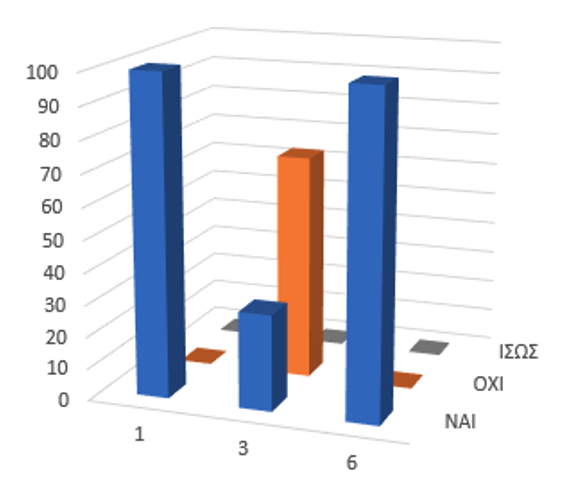
Figure 1: Usefulness of Information
On the contrary, everyone thought that tags are effective when searching for information.
When asked if the search filters of the service meet the goal of the user, everyone answered in the affirmative and even checked the option “a lot”.
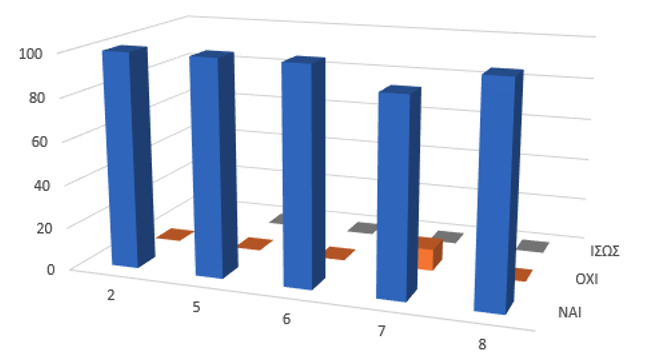
Figure 2: User-friendly services & user experience
Everyone found the representation of the event’s location in the 360-degree video very useful.
In addition, most respondents answered that the 360-degree video presentation of the locations greatly maximizes the user experience by providing information about the locations in audiovisual manner.
Moreover, everyone agreed that the information and functionality of the location is very useful from the artists’ point of view.
When asked if they believe that locations in Crete that host cultural events can be advertised through this service, all 100 respondents gave a positive answer.
The same number answered that Cretan tourism is promoted by this service a lot, and so are the cultural events that take place, as they suggested.
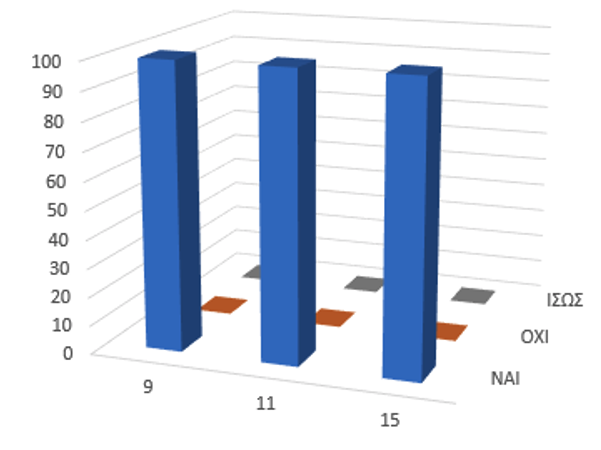
Figure 3: Promotion of cultural events
When asked whether historical conclusions could be drawn from the thematic, spatial or temporal study of this service, 80 answered “maybe” and 20 “no”. It should be noted, however, that those 20 who answered “no” are all academic historians and archaeologists, whose views have different significance because this question is directly related to their field.
To the next supplementary question about whether the use of such a service increases the existing knowledge about the history of Crete, based on the facts as recorded in it, 40 answered “not at all”, another 40 “a little” and only 20 “a lot”. It should be noted again that 20 of those who gave a negative answer were the academic historians and archaeologists.
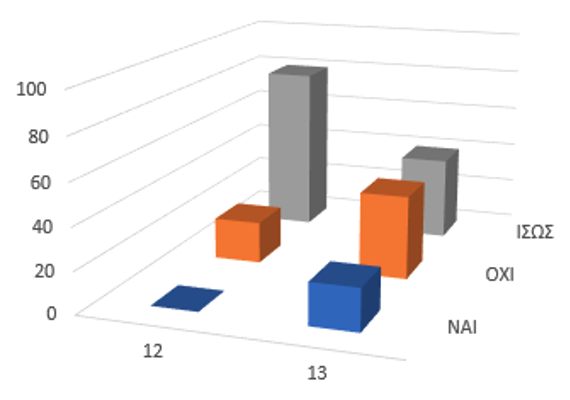
Figure 4: Science/ History
To the penultimate question regarding whether this service can be useful in the organization of tourist visits and tours in Crete, all 100 answered in the affirmative, showing that this service can have a significant contribution to the promotion of tourism.
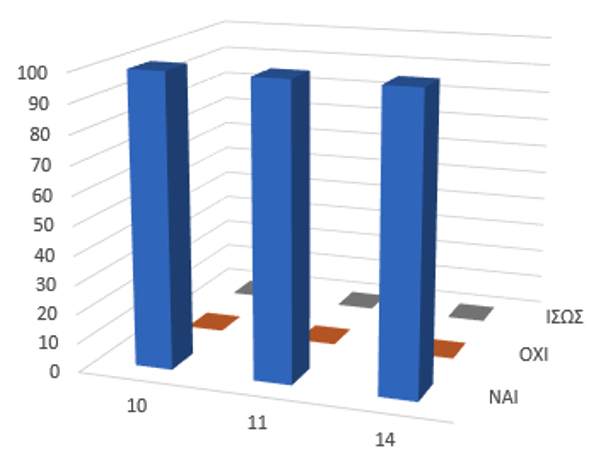
Figure 5: Tourism
The above statement is confirmed in the very last question. Everyone responded positively on whether the service contributes to the organization of student educational visits to cultural sites within Crete.
The answers given to the questionnaire confirm the research question of this study.
In particular, from the perspective of tourism, tourists and visitors as the general public, travel agents, tour guides and hoteliers said that such a service seems to be user-friendly and useful as it gathers a lot of information about cultural events and their locations in all four prefectures of Crete. As they claim, it gives them the opportunity to direct tourists to possible local events and visits to historical and cultural sites when cultural events are held there.
They also said during the conversation we had that the representation of the event’s location on a 360-degree video that gives all the audiovisual information, can also work as an advertisement, arousing the visitor’s interest to visit the location and attend the events held there.
In general, they think that this service promotes Crete both in terms of tourism and culture. Regarding the cultural sector, all the participants, and most of all artists/creators, found the service quite easy to use and functional in terms of registering their events and searching for an event by using the filters, as well as complete as to the information provided on the events.
Regarding the representation of the event’s location in the 360-degree video giving the information in audiovisual manner, the artists/creators said that they found it very useful because they can understand, especially from the technical features of the location as well as from the spherical video view, whether the specific location is the right one to organize their event. Moreover, if they do not have the opportunity to come to Crete and visit the location themselves, this video is very helpful.
Finally, everyone said that cultural events seem to be promoted a lot by this service.
Regarding whether historical conclusions can be drawn from the thematic, spatial or temporal study of this service, most of them said “maybe”. Some of them said that if, for example, one searches the period 2020-2021, one can see a greatly reduced number of events, if not at all at some points, which is a solid reference to the lockdown period we were going through during the Covid-19 pandemic, and this cannot be but a historical conclusion.
Academic historians and archaeologists, on the other hand, who interpreted the question differently, possibly as to whether the service promotes in-depth historical knowledge, answered in the negative. In other words, they do not think that this service could be useful in the historical aspect.
To the possible connection of the service with the increase of the existing knowledge about the history of Crete, most answered “not at all” or “a little”, showing that they do not share this view. Especially, it was all the academic historians and archaeologists who answered that “not at all” can this service increase the knowledge about the history of Crete.
On the other hand, the same portion of respondents (academic historians and archaeologists) said that this service can promote the tourist and cultural product. They also pointed out the usefulness of mapping the locations, giving the visitors and tourists the possibility to see the cultural venues on the map and to organize day trips (itineraries), visits and guided tours combined with the dates of the events.
- CONCLUSIONS
It is, therefore, concluded that this new map’s presentation service of cultural events of the region of Crete is useful in the tourism sector because it promotes the cultural events and the cultural and historical locations in which they take place. Some of these locations become known (through the events held and the map) and attractive to visits and guided tours (tourist, educational purposes), especially through the publication of the event.
The service also contributes to the wider publicity of cultural events, a fact that acts as an additional support for artists/creators, especially for the promotion of culture in the region of Crete.
The VR audiovisual representation of the locations with 360-degree videos also plays a major role as it highlights historical information, functional and technical features of the locations, which is very useful for artists/creators who search for the right location to organize their event and may come from another city or even another country and have no opportunity to visit the location beforehand.
On the other hand, the results that came from the questionnaires showed that no in-depth historical conclusions can be drawn that could be used in academic studies. Therefore, the historical facts and the way they are recorded in this service cannot contribute to the increase of the knowledge about the history of Crete.
Our research question was confirmed and at the same time the connection of culture with tourism became obvious. In other words, even in this service, the promotion of the cultural product is a precondition for the promotion of tourism, because tourism among other things somehow manages to transfer our culture to other peoples.
This service can have various commercial and non-commercial applications. It could be used by the Region of Crete or the Municipalities of Crete and constitute a type of dynamic, constantly updated repository of the cultural events held in Crete to promote the cultural and historical sites of each prefecture.
In general, however, this service can also be a springboard for other online services or applications designed and equipped with new technologies that could be broadly involved in the promotion of tourism combined with culture.
REFERENCES
Bernard, R.H. (1999), Social Research Methods: Qualitive and Quantitative Approaches, USA: Sage Publications.
Javeau, C. (2000), Questionnaire Research, Athens: Typothito.
Manola, M. (2019), Literature-Tourism-Culture (ed. Manola),Athens: Tsotras.
http://ncrawl.nmlabs.gr:8090/ui.
http://ncrawl.nmlabs.gr:8090/ui/login
